Coaching for Success
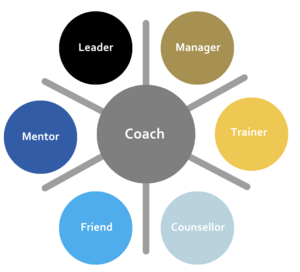
Instructions
Why are we covering coaching (again) in the last module?
It is a powerful tool to enable and mobile team members, peers and stakeholders
It will help bring the program learnings to life through application and experimentation
Coaching principles can be powerful when used on/with ourselves as we aim to apply the course learnings
Self-coaching is a form of self-care
Coaching refresh
NB: You can do this is in whatever way works for you, such as:
Asking questions and then showing a slide of the model/framework
Use a variety of pairs/small groups to brainstorm different questions and present back
Have charts on the wall with all the key models and do a philosophers’ walk (e.g. in pairs discussing each model and how they may have used it, what they’re not sure of, etc.)
Revisit Module 3 / Session 2 for a refresh on the coaching principles or to use slides for this session.
Areas to check include:
What is coaching?
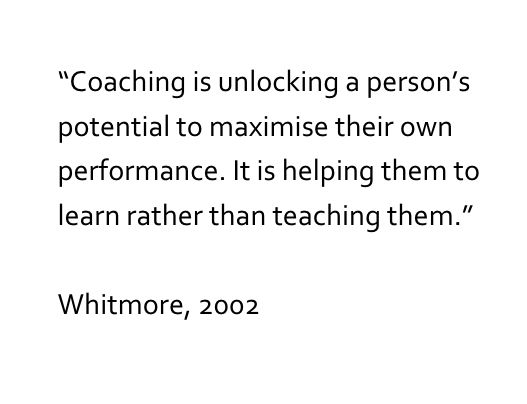
What is one definition of coaching we looked at? (P = p-i)
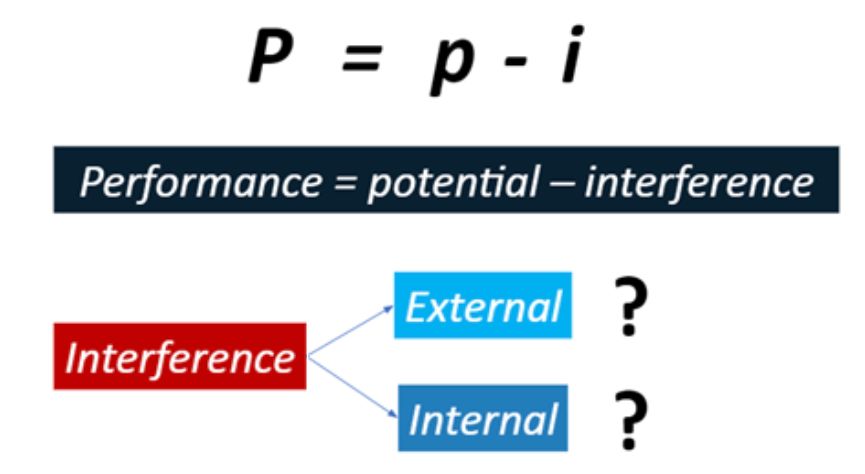
What are the most important things to remember about coaching? (listening, empathy, good questions, etc.)
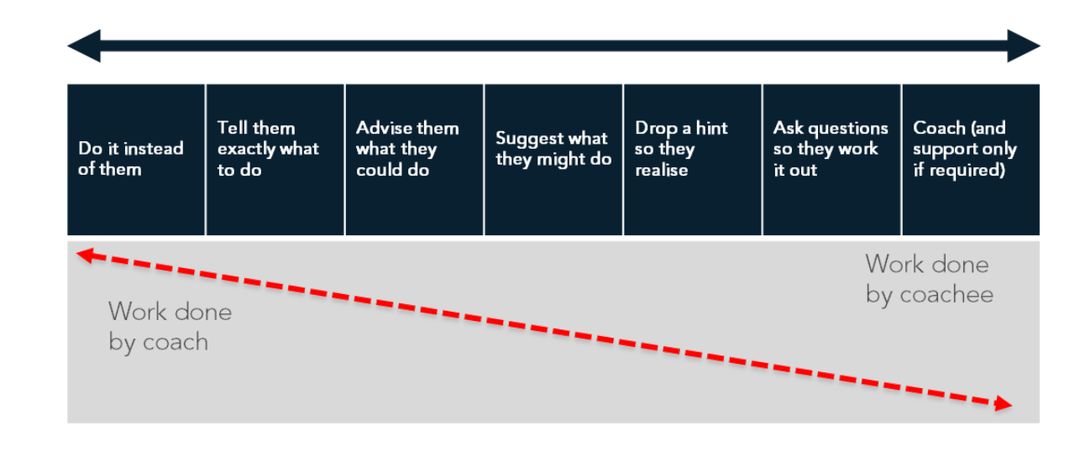
Why do we emphasise open verus closed questions? (open the conversation up, make the other person do the thinking and the work)
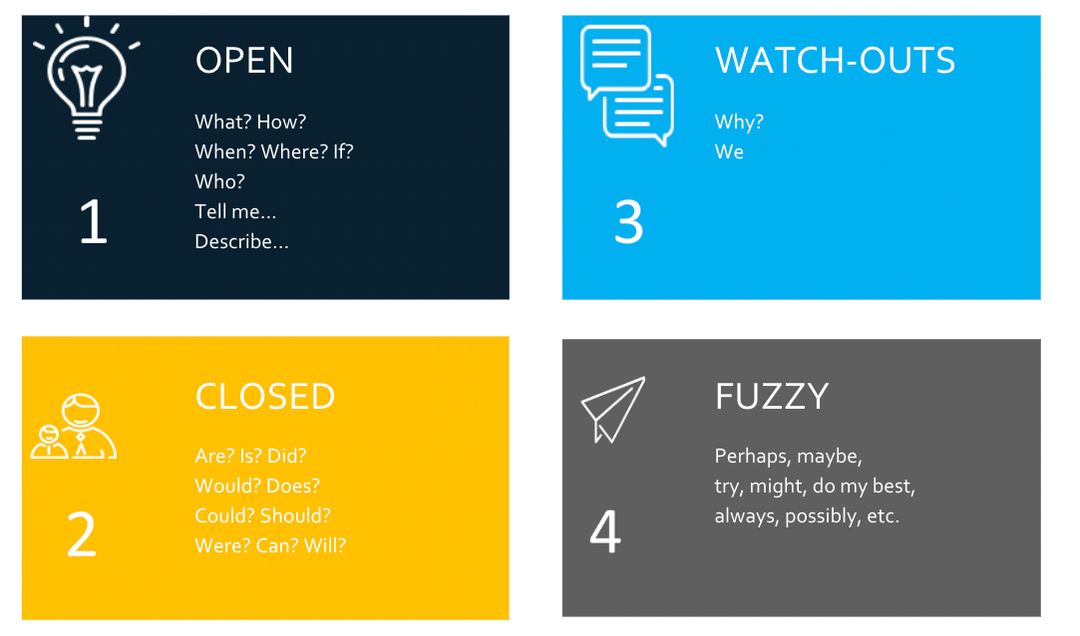
What does solution focused coaching mean/look like? (move people from focusing on problems and negative thinking to a place where they have clarity and confidence in the next steps)
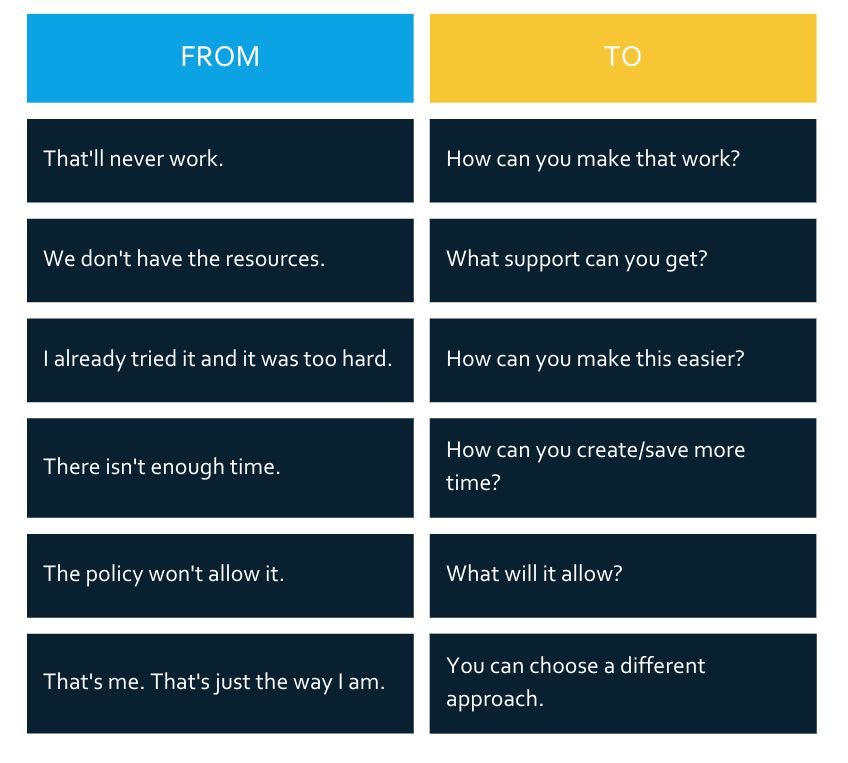
What are the roles we can play? (e.g. manager, trainer, leader, mentor, counsellor and friend)
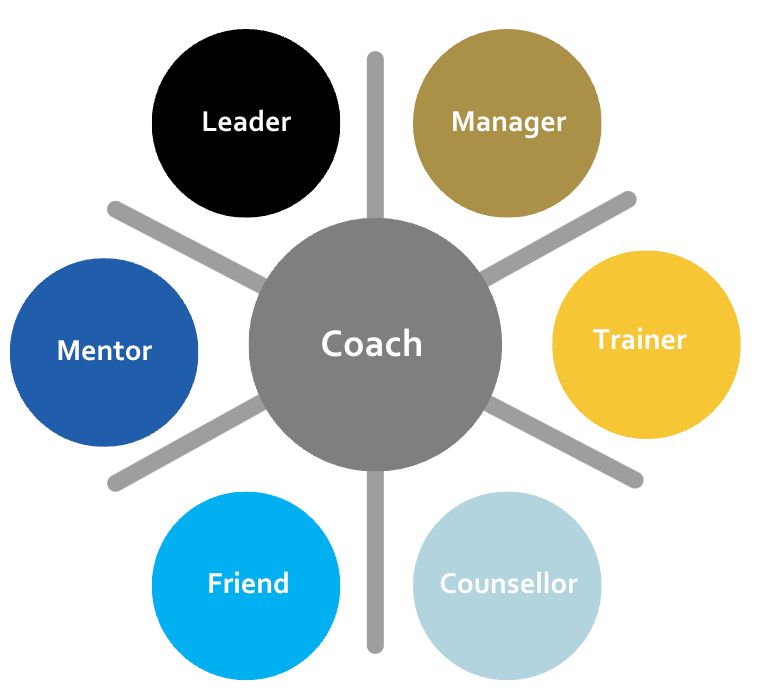
What is the relationship of trust and tension? (value)
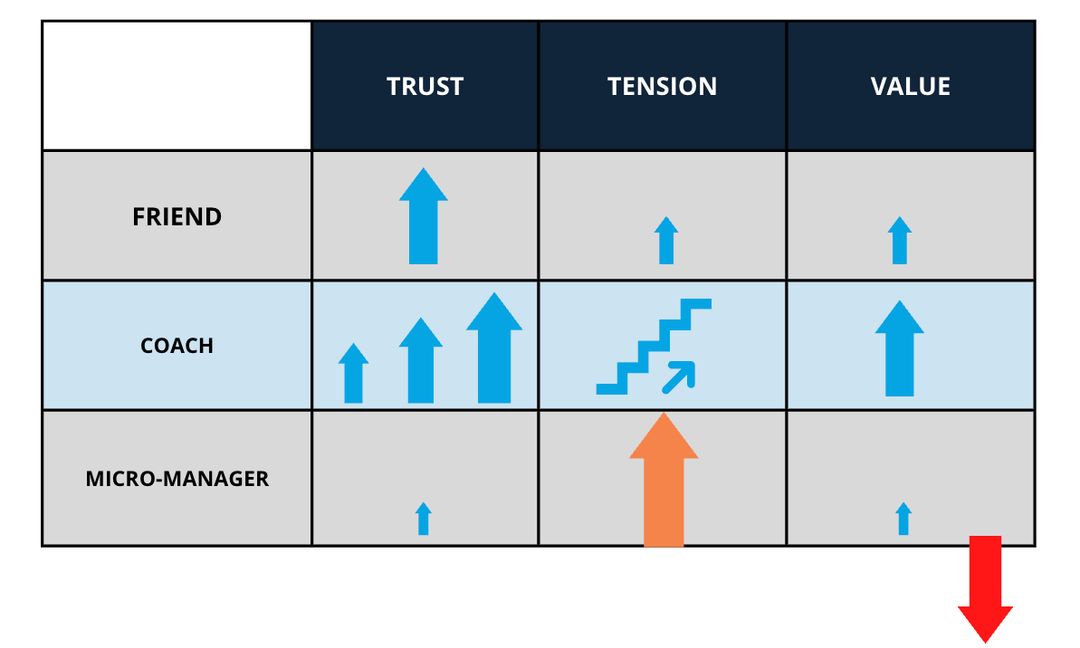
What are the Do’s and Don’ts of coaching?
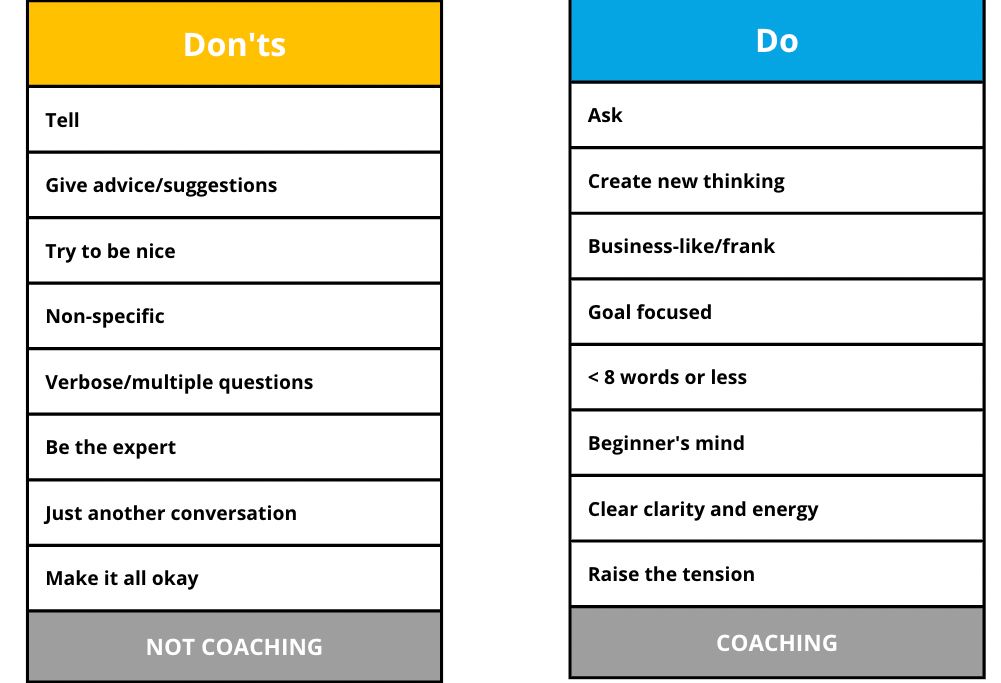
What is the GROW model? What is it’s purpose?
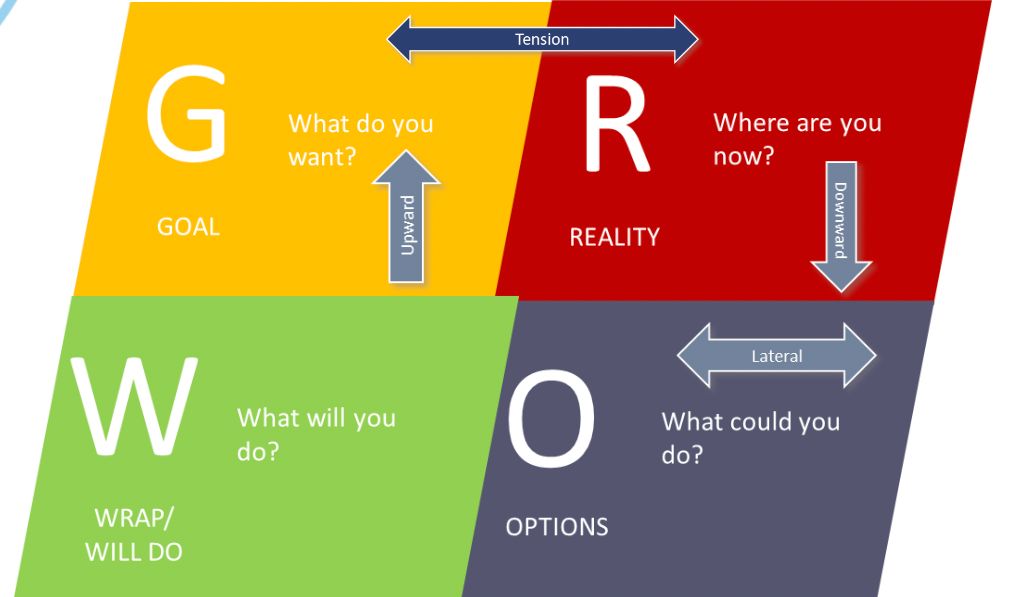
We will practice coaching another person shortly with a specific focus on application and implementation of LX program theory, however, we will first cover some key ideas about self-coaching.
Self-Coaching
SLIDE XX: SELF-COACHING DEFINITION
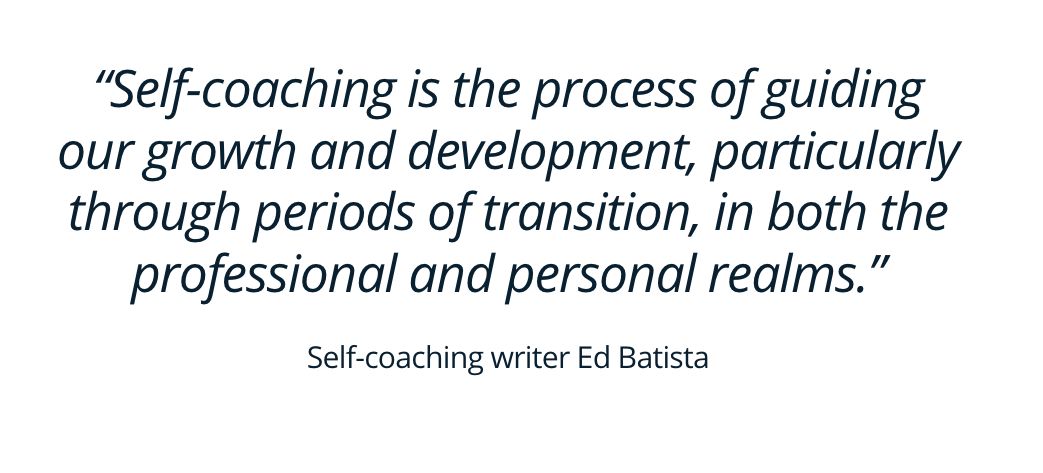
Self-coaching writer Ed Batista writes,
“Self-coaching is the process of guiding our growth and development, particularly through periods of transition, in both the professional and personal realms.”
Usually, business, executive and leadership coaching cover your working life, and life coaching feeds your personal development. It’s true these forms of coaching are separate and focus on different areas of interest, but self-coaching relates to both the professional and personal realms because “the dynamic interplay of our professional and personal lives means that each sphere affects the other, and we can’t look at one in isolation.”
Self-coaching covers your whole self and all areas of your life. If things are good in one area, that’s great, but if you are dissatisfied or unfulfilled in another area, this should be your focus — especially because it can impact the other aspects of your life.
SLIDE XX: HOW TO COACH YOURSELF
Here’s how to coach yourself, whether it be about resilience or any other leadership / management skills you are working on improving or amplifying:
1. Identify your desired outcome
This is your starting point (as you have just done for resilience). You need to decide on your end-goal to know where you’re headed and where to direct your efforts. Ask yourself questions like, “What is important to me right now?” and “What do I want to be, do or have?”
Try to be specific with a positive frame. For example, a goal like “I want to be less irritable” may be made more specific and positive by saying, “I want to be more patient with my spouse and my kids on a daily basis,” or “I want to demonstrate more patience with my team in meetings.”
2. Cultivate self-awareness
Conduct a quick and easy assessment to review where you are now. The point isn't to judge yourself and make yourself feel bad — it's just to get some information on where you are and where you want to be. The first step is to bring awareness to your situation and determine what you need to work on. Consider where you are on a scale of 1 to 10 in the area you would like to improve. You can also journal around this topic to further explore what you are experiencing.
3. Brainstorm your options
Weigh the possibilities open to you. This is a wonderful opportunity to get creative and brainstorm how you can achieve your goals. What options are available to you? Which options resonate the most right now?
4. Make a plan
How will you put your options into place? What will you do to achieve this goal or improve your situation? What actions do you need to take to reach your goal?
For example, drawing on the earlier example, a plan might look like “At 6 p.m., I will close my computer and be available to my kids and partner,” or “In Monday’s meeting, I will listen to each team member’s input, before I jump in.”
5. Take action
Take the first step — and continue. Stick to your plan. Are you doing what you said when you said you would?
6. Measure and celebrate
Determine how you will measure your success and celebrate it. Hold yourself accountable, or find an accountability buddy to see how you are doing. Reward your efforts when you hit that milestone or achieve that goal.
Self-coaching is a valuable addition to your toolbox, especially as we continue to navigate the post-pandemic world. It pays to allow yourself some time to reflect and respond versus reacting. Intentionally tend to yourself in the service of being your best self for you and others.
SLIDE XX: COGNITIVE BIASES IN SELF-COACHING (AND LIFE)
In self-coaching, and life in general, we need to be aware of some of the main biases that play out that can keep us stuck or even heading in the wrong direction, wasting time and energy and potentially causing ourselves and others pain and frustration.
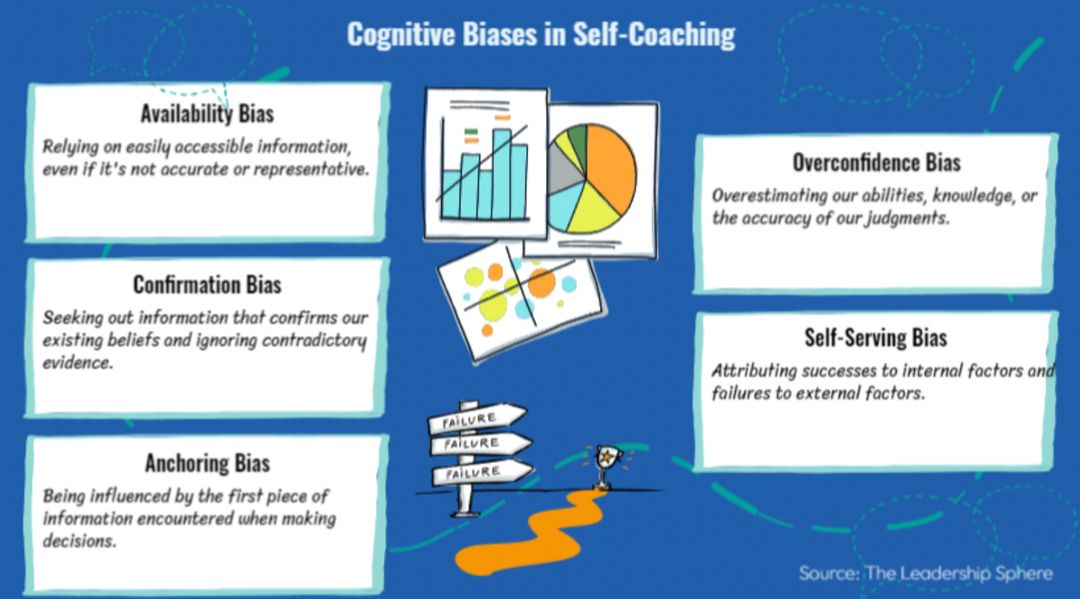
According to the work of Model Thinkers, here are five cognitive biases that you should be mindful of:
Availability Bias: The availability bias refers to our tendency to rely on information that is readily available in our memory when making judgments or decisions. We may give more weight to information that comes to mind easily, even if it's not representative or accurate [2].
Confirmation Bias: Confirmation bias is the tendency to seek out and interpret information in a way that confirms our preexisting beliefs or hypotheses. We may selectively pay attention to information that supports our views and ignore or dismiss contradictory evidence [2].
Anchoring Bias: Anchoring bias occurs when we rely too heavily on the first piece of information we encounter when making decisions. This initial information, or "anchor," can influence our subsequent judgments and lead to biased outcomes [1].
Overconfidence Bias: Overconfidence bias refers to our tendency to overestimate our own abilities, knowledge, or the accuracy of our judgments. We may have excessive confidence in our beliefs or abilities, which can lead to poor decision-making and a lack of self-awareness [3].
Self-Serving Bias: The self-serving bias is the tendency to attribute our successes to internal factors (such as our abilities or efforts) while attributing our failures to external factors (such as luck or circumstances). This bias helps protect our self-esteem but can hinder personal growth and learning [3].
It's important to be aware of these cognitive biases in self-coaching to ensure that our thinking is as objective and accurate as possible. By recognizing and challenging these biases, we can make more informed decisions and achieve better outcomes.
NB: The section on being a goal setter may be one you don’t use or only use one or two ideas, depending on the group, objectives, etc.
SLIDE XX: BE A GOAL SETTER
SLIDE XX: DEVELOPMENT PLAN PRINCIPLES
Development planning helps you reach your full potential
Two-way street
Should be specific (actions and outcomes)
Varied – 70/20/10 OR commit to three actions for each day of training
Balance between strengths and weaknesses
SLIDE XX: CAPABILITY DEVELOPMENT
Spend some time thinking about the capabilities that you want to continue to develop as a result of this program (workbook) - lets start with two only rather than a long shopping list!
Individual reflection and sharing with a partner (15 mins).
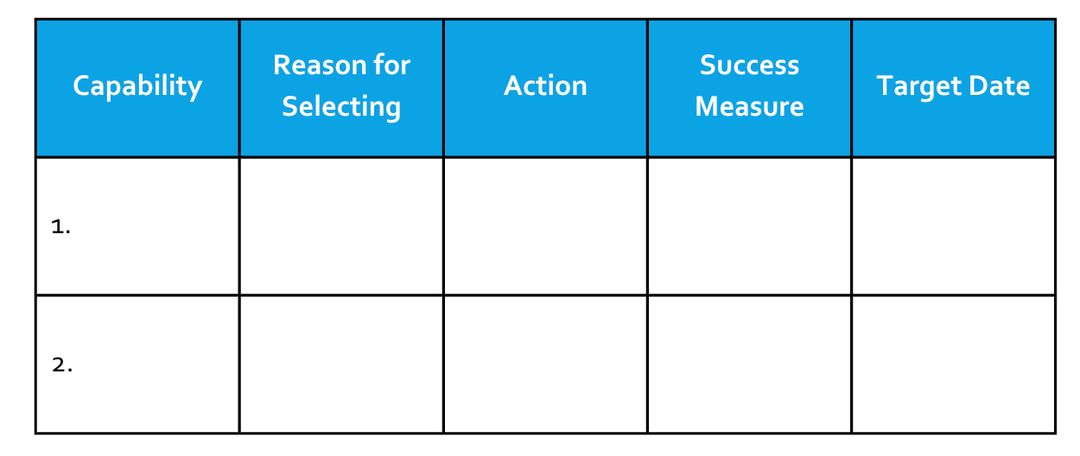
Review Process: Step 3
When your team rotates to a new Module, select a new discussion leader.
If you feel a particular module is a strength for you - i.e The Trusted Advisor, you may want to volunteer as the discussion leader for that module.
Reflection
Go back to your development plan (table)
COACH each other to formulate a solid Development Action, Success Measure and Target Achievement Date for each Capability
Each person has 10 mins to coach and get coached (20 mins)
focus: ACTIONS, MEASURES, DATES, SCHEDULE.
Final Step - Support
Transfer of learning to the real world is challenging.
Brainstorm the support mechanisms you could put in place to support transferring learning your role
- How will you continue to build your capability?
- What support do you need from who?
- How will you ask for that support?
- What else can you do to build momentum and optimise value from the program?
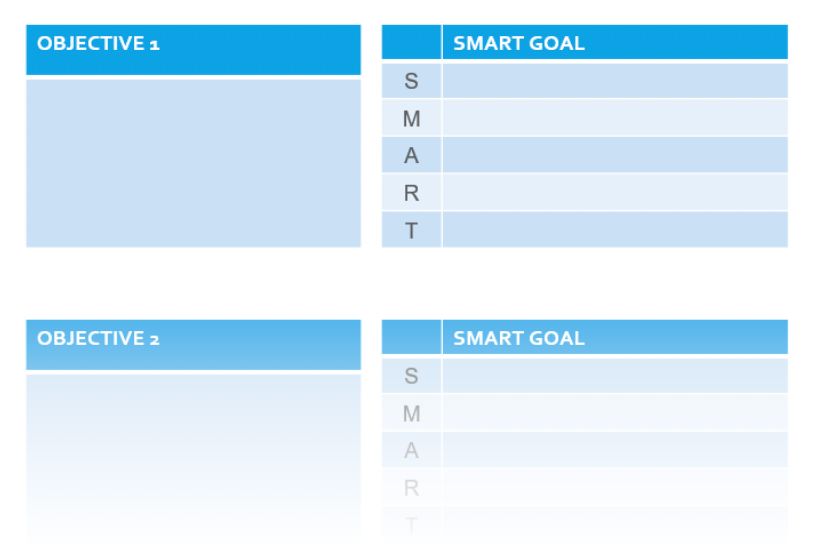
Attachments
- Screenshot 2024-07-04 at 2.34.02 pm.png
- Screenshot 2024-07-04 at 2.07.21 pm.png
- Screenshot 2024-07-04 at 2.01.34 pm.png
- Screenshot 2024-07-04 at 1.54.19 pm.png
- Screenshot 2024-07-04 at 1.49.42 pm.png
- Screenshot 2024-07-04 at 1.49.04 pm.png
- Screenshot 2024-07-04 at 1.47.58 pm.png
- Screenshot 2024-06-25 at 10.24.18 am.png
- Screenshot 2024-07-04 at 1.46.26 pm.png
- Screenshot 2024-07-04 at 1.44.37 pm.png
- Screenshot 2024-07-04 at 1.43.24 pm.png
- Screenshot 2024-07-04 at 1.41.54 pm.png
- Screenshot 2024-07-04 at 1.39.49 pm.png